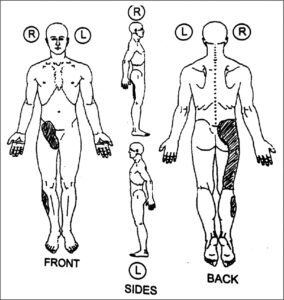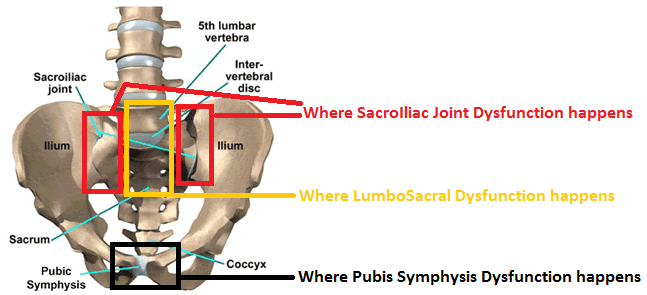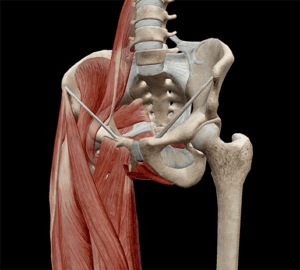The Sacral iliac joint can stop you cold in your tracks when it is not functioning well.
This is the most common area of the pelvis a person will point to when they come in for therapy stating “My hip is hurting”. The small amount of movement in this joint has deceived healthcare providers for years. Some still believe that this is a fused joint without any movement at all but the truth is it has movement and when it is not moving well or the two sides are not in a good relationship to each other the pain can vary from mild to unbearable. The pain of SI joint dysfunction can keep you from sitting, walking and can even hurt when lying down. The pain can be in the buttocks region and radiate down to the knee most commonly although in the clinic I have worked with people who have pain all the way to the foot. 
Why can SI joint pain be complicated to fix? What steps can be taken to completely and permanently resolve SI joint pain?
Let’s avoid getting too technical and look at the pelvis like a tea cup. This particular tea cup was broken so there is a wedge shape piece that has been fit back into the cup carefully and exactly. There is a joint on each side of the wedged shaped bone (the sacrum) so it can match up with the other two bones forming the pelvis (tea cup). In order for the whole tea cup to function well there is also a joint on the front of of the pelvis called the public symphysis which works in relationship with the wedge shaped bone (sacrum). The 3 joints have to work together. You see the pelvis and it’s 3 joints are the center of stability and movement for your body. The joints work together because of a significant number of muscles which are coordinating the function of the pelvis (tea cup), and it’s joints.

Now imagine that these 3 joints are not balanced and as a result the joint surfaces are bumping together in ways they were not intended to bump together, the muscles are striving to bring the joints together and hold them in balance but the joints are “stuck” in a dysfunctional position. The muscles start to cramp, become inflamed and stop working as a team. This causes the nerves to become pinched and the blood vessels get constricted so the tissues are not getting healthy circulation or correct messages from the brain. The brain keeps trying to find a movement pattern which will allow healthy relationships in the pelvic joints and muscles but the brain is not finding this to be a simple task.
Keeping the SI joints and the public symphysis working together as a system takes more than just snapping the SI joint into place. A practitioner has to look at the entire pelvis including all the of the parts and how they work together. In the next post I will discuss steps which can be taken to support the return of your SI joint function which is permanent.





